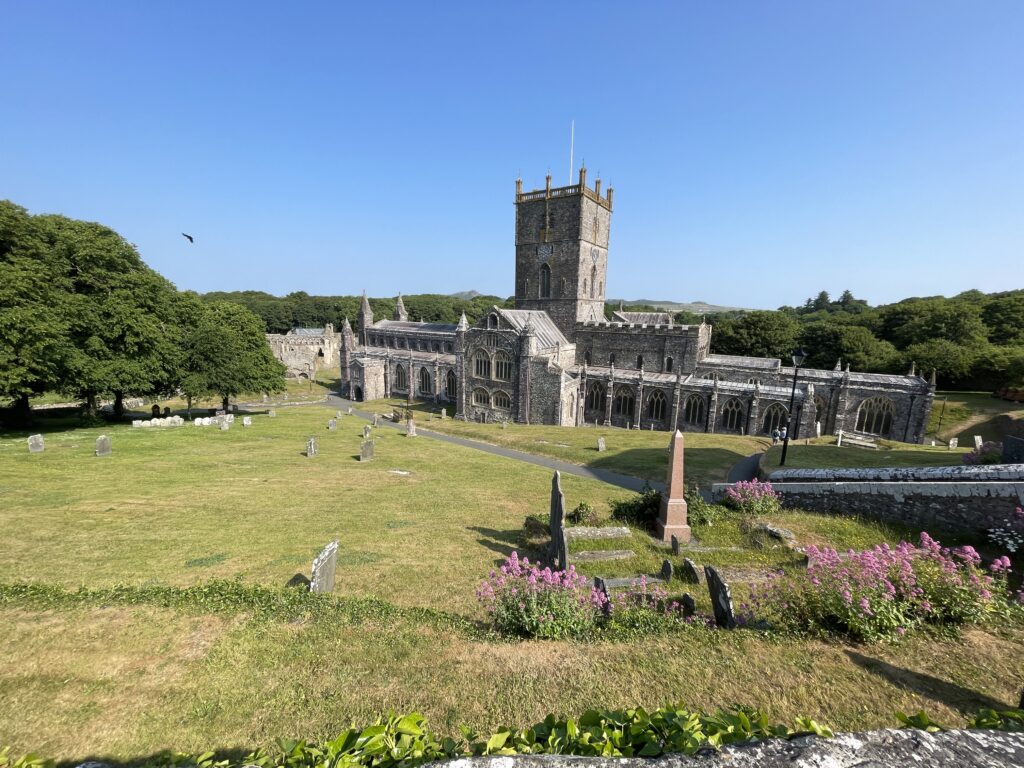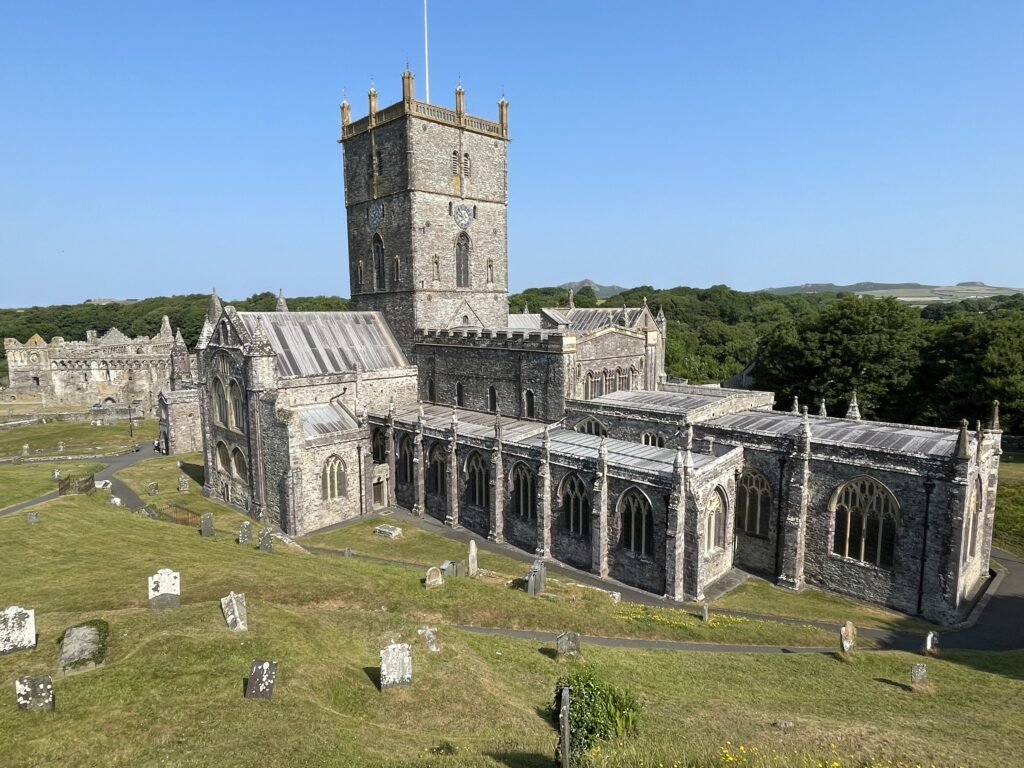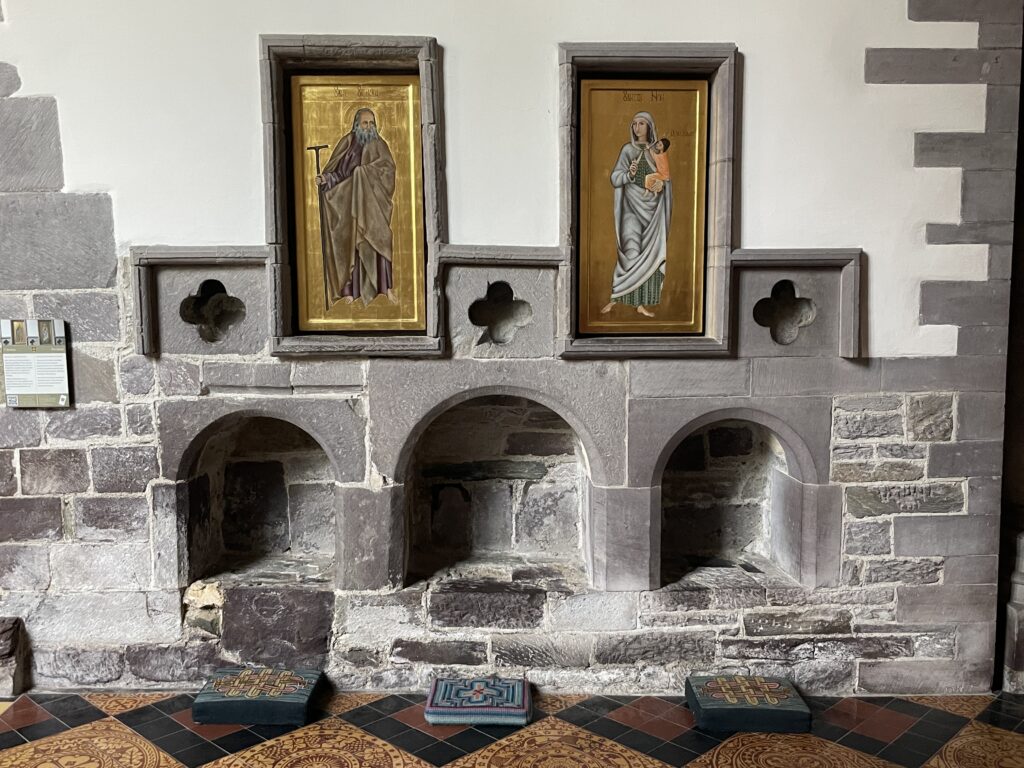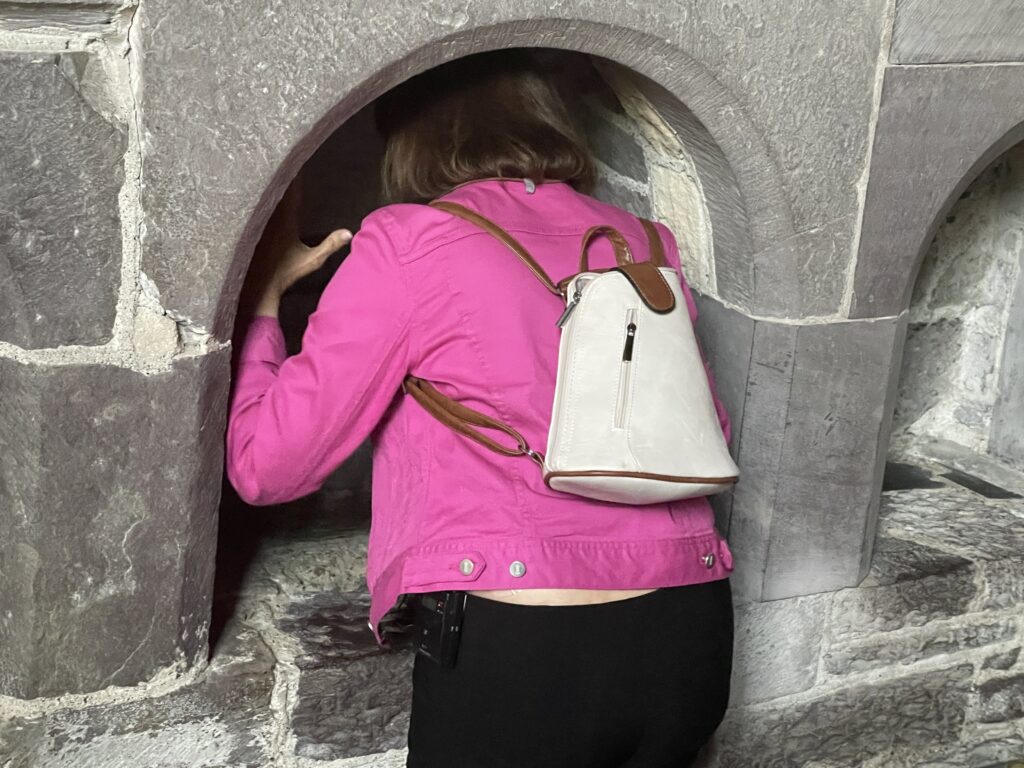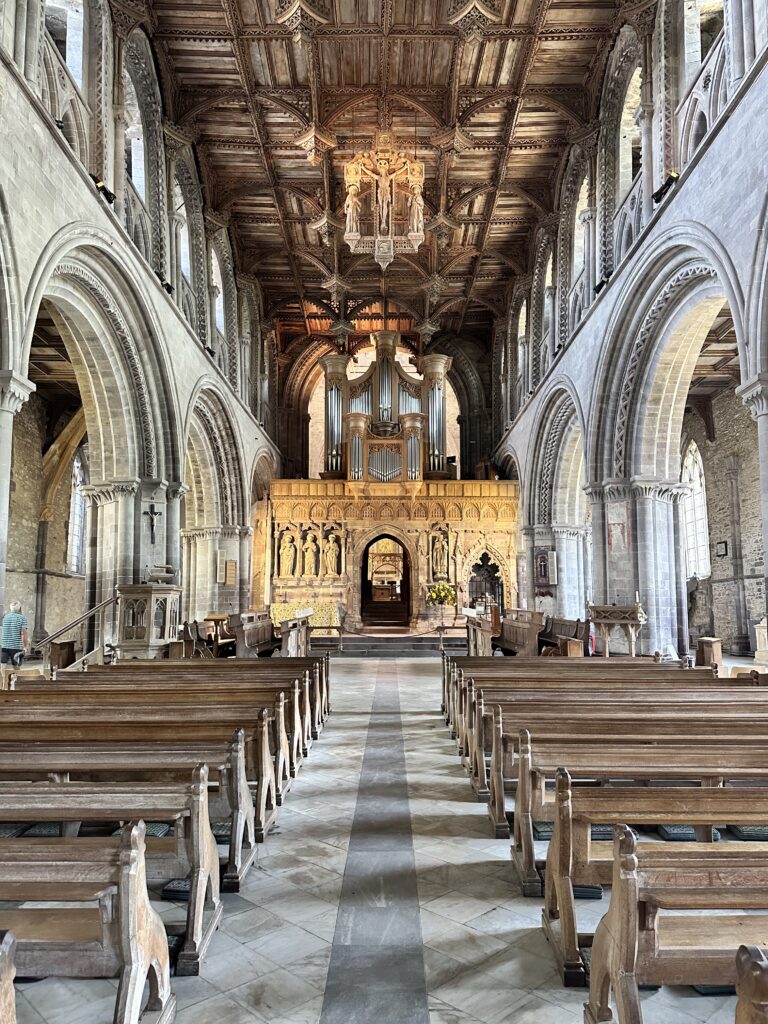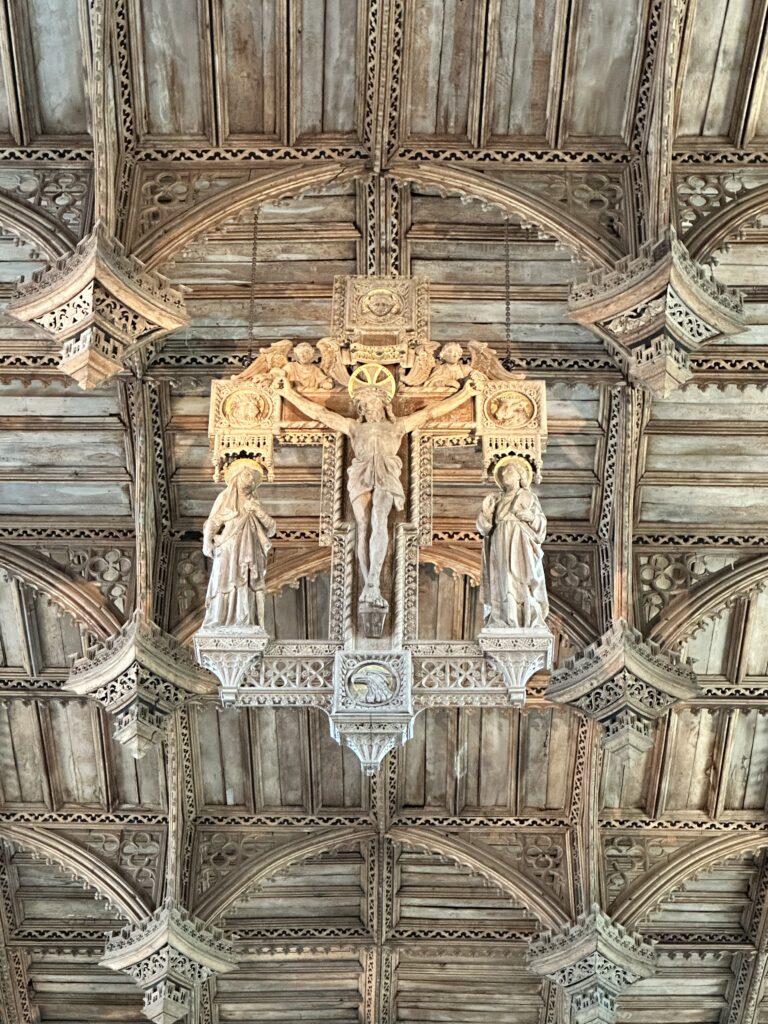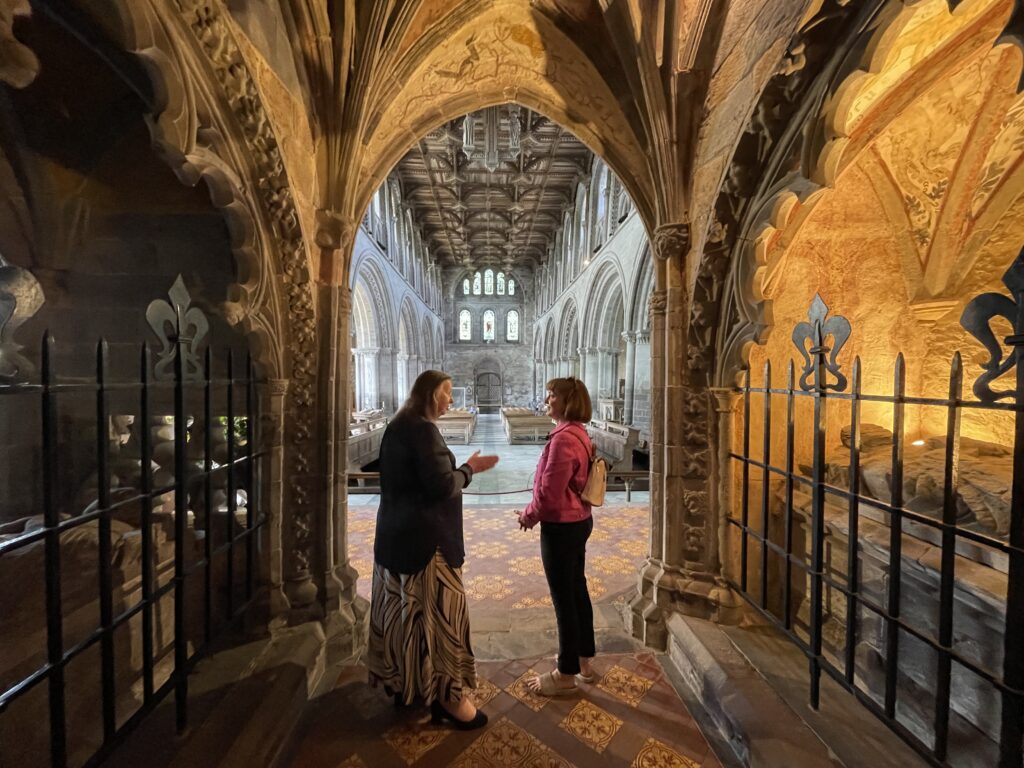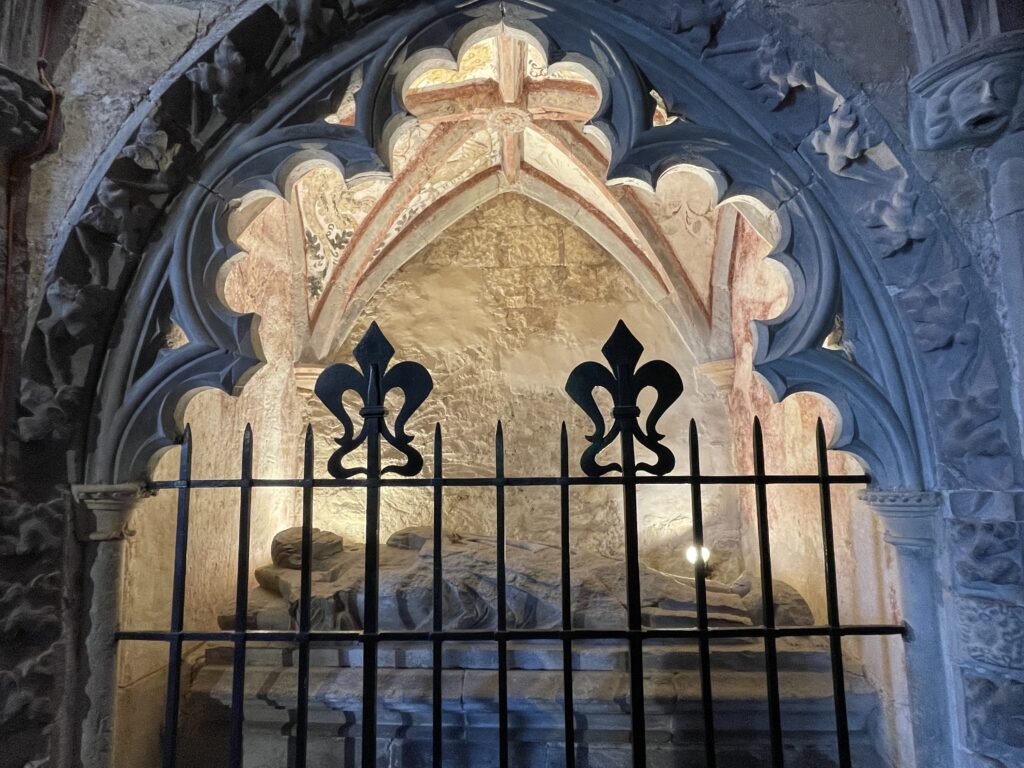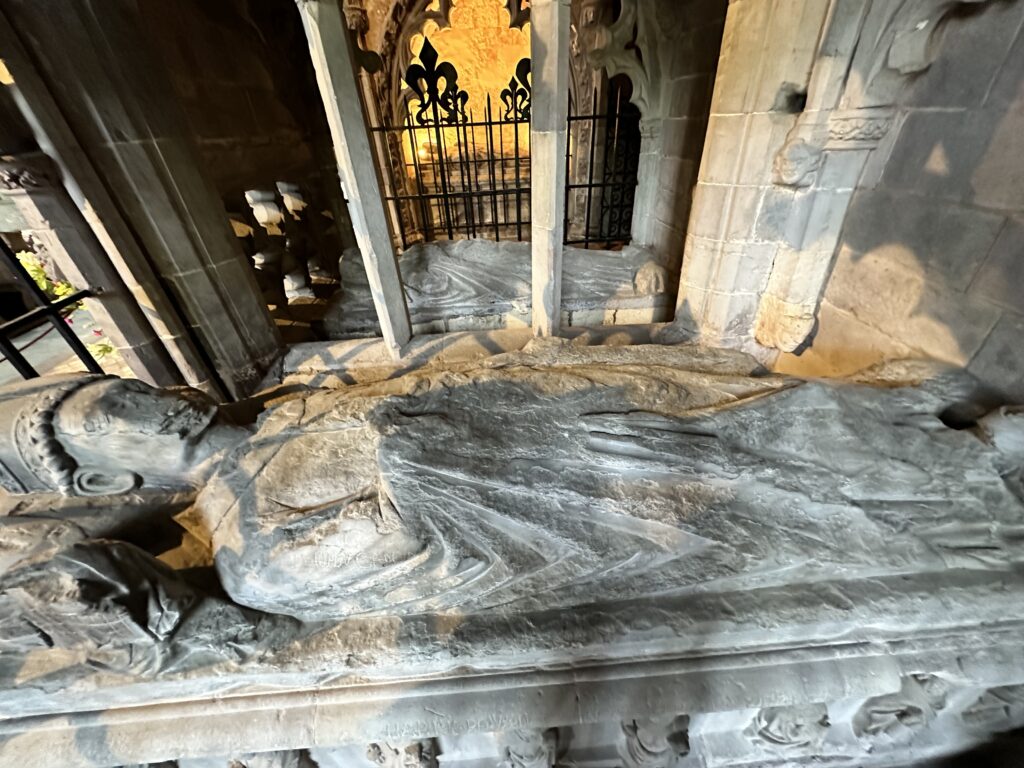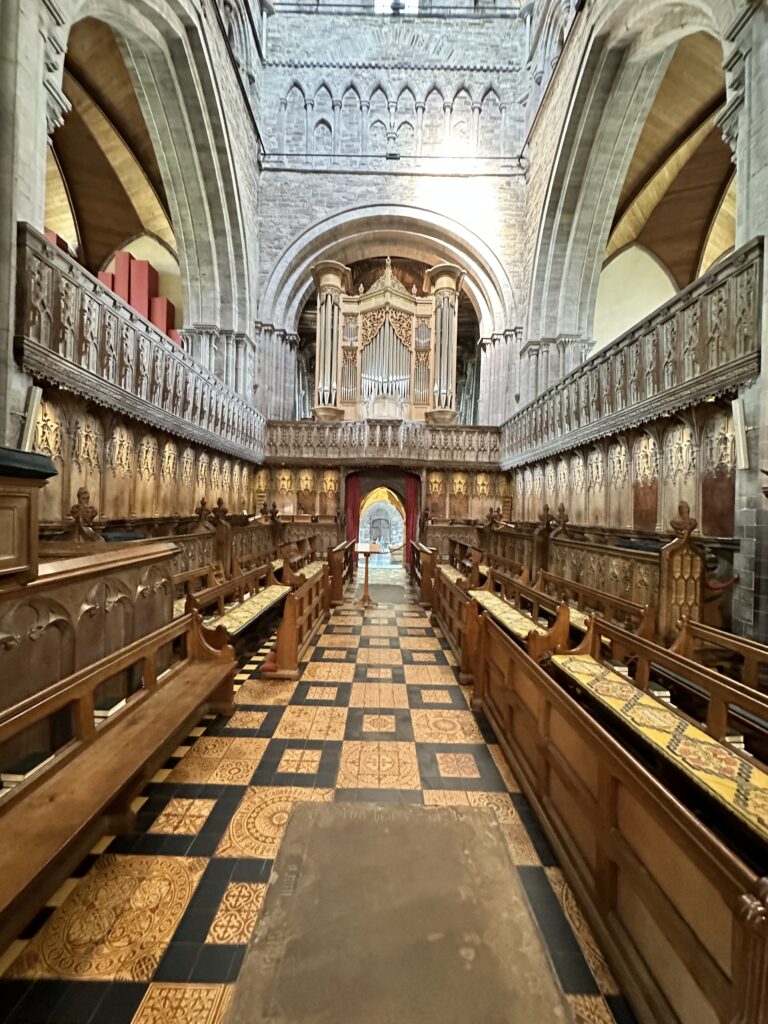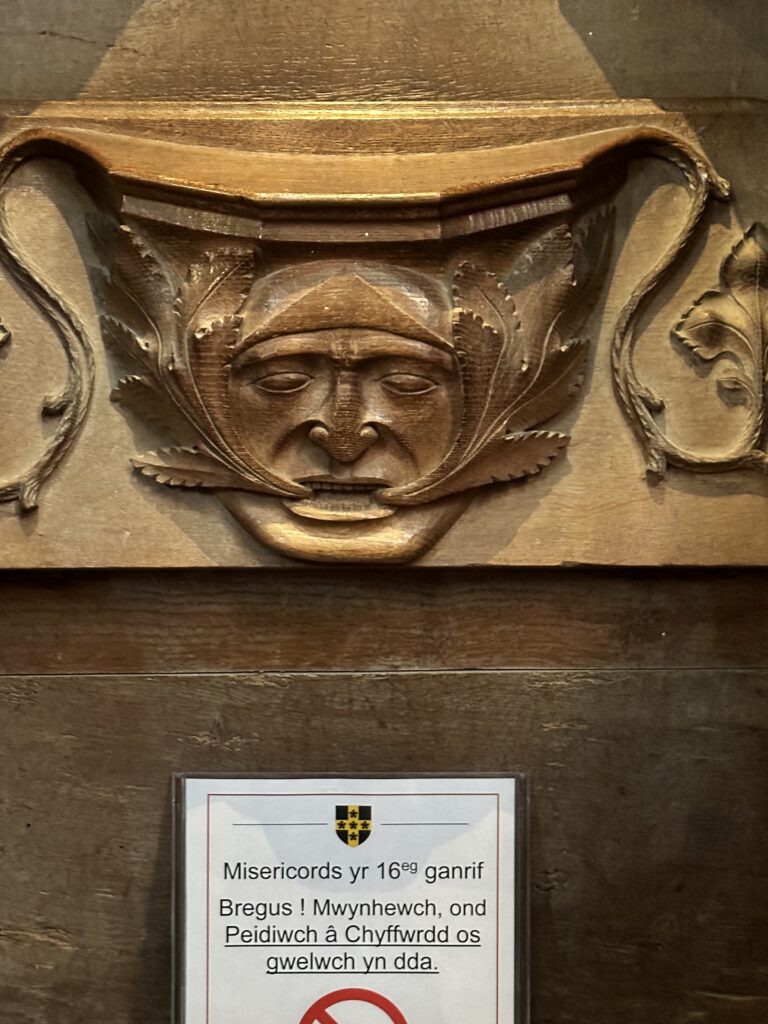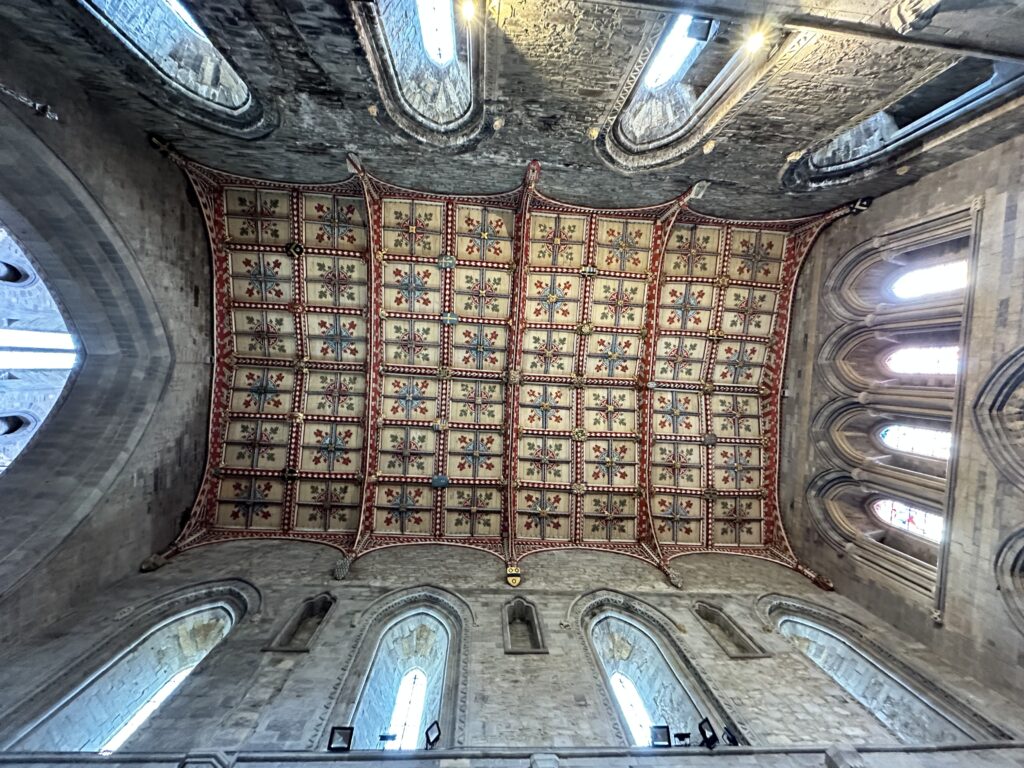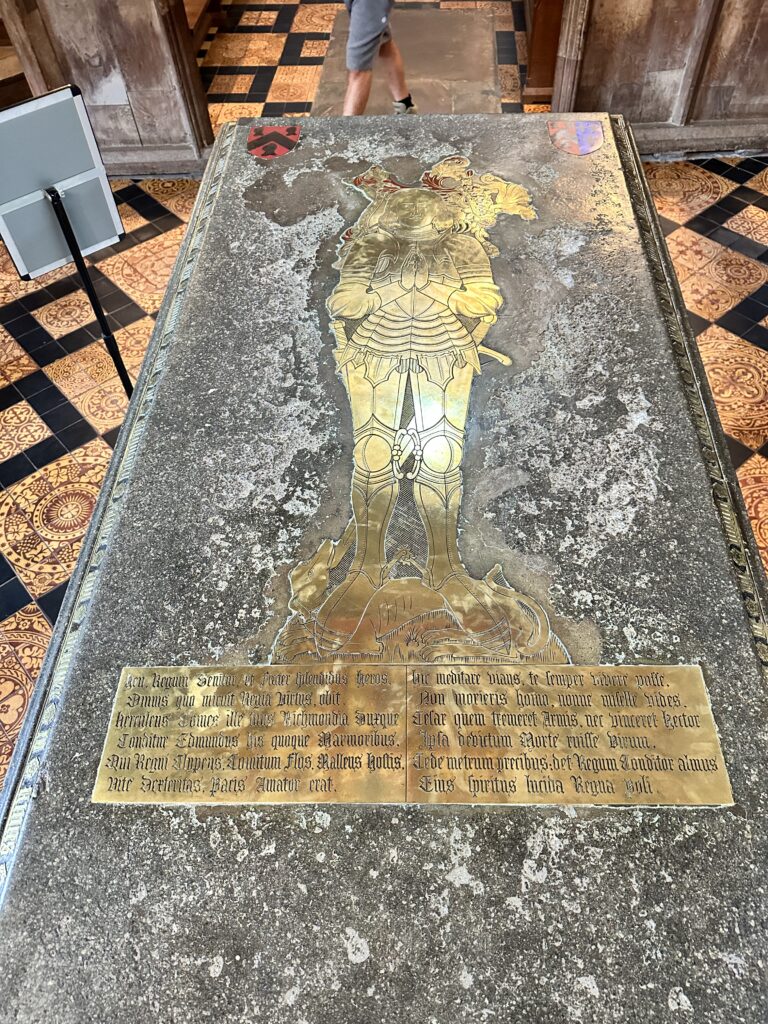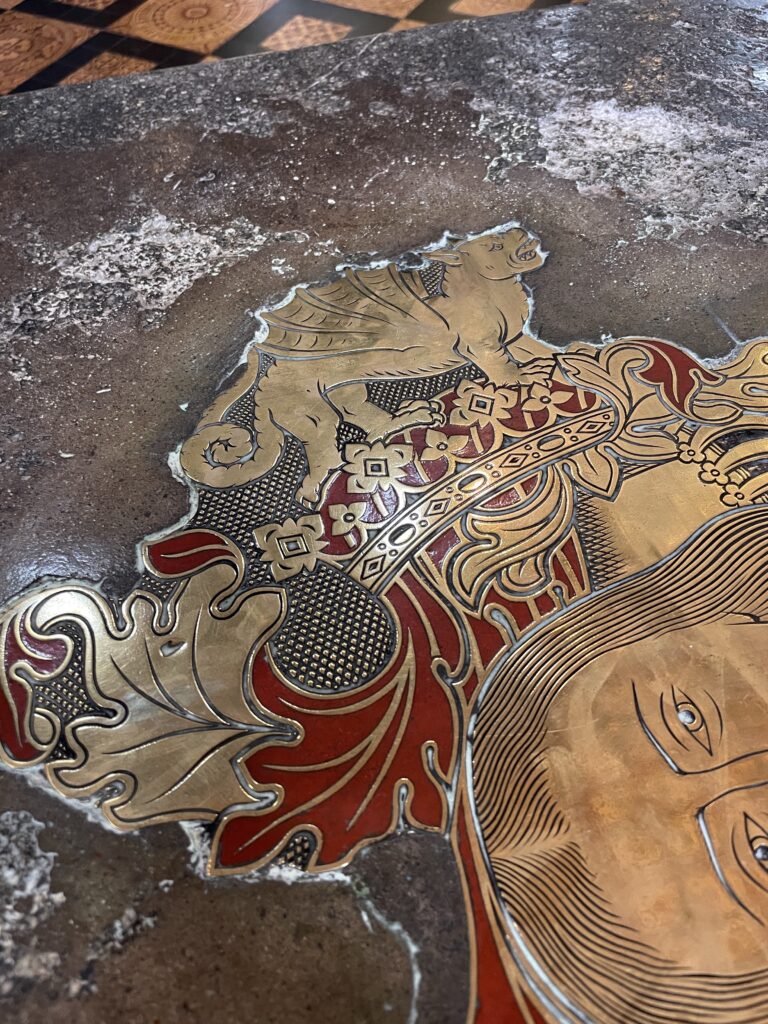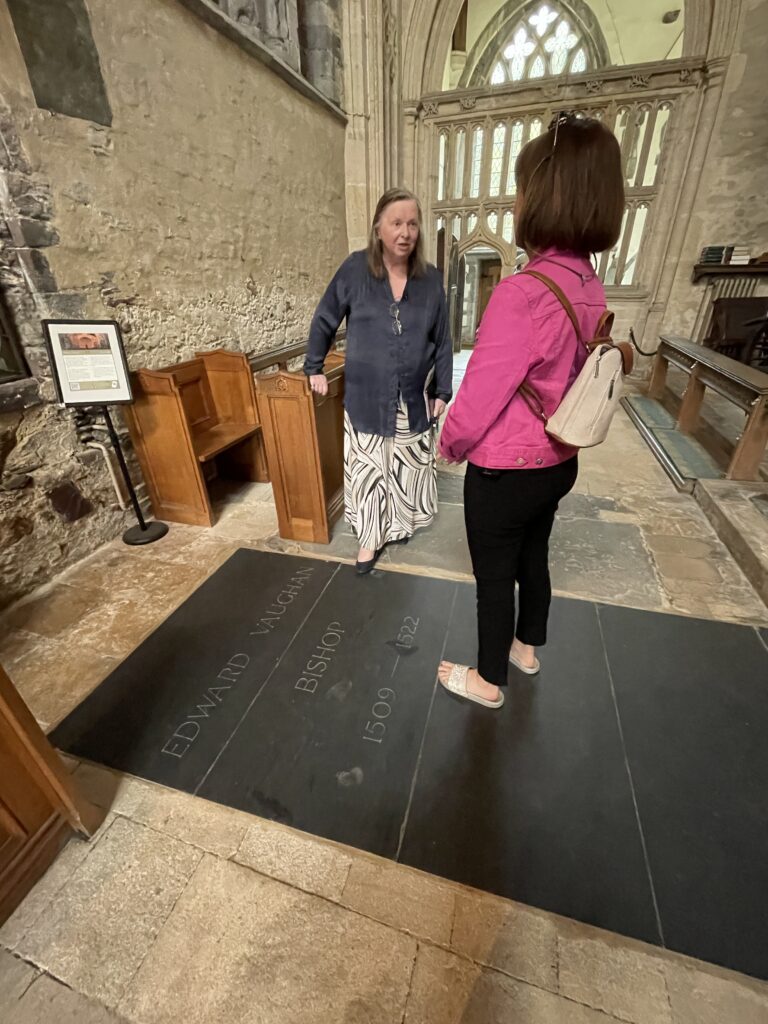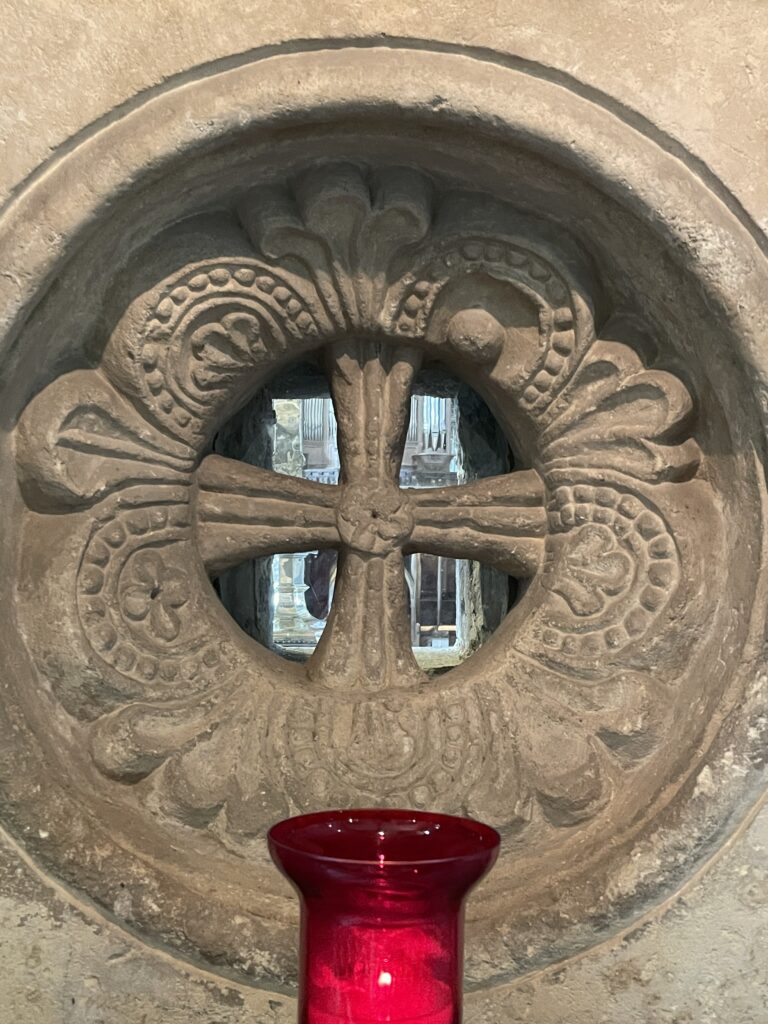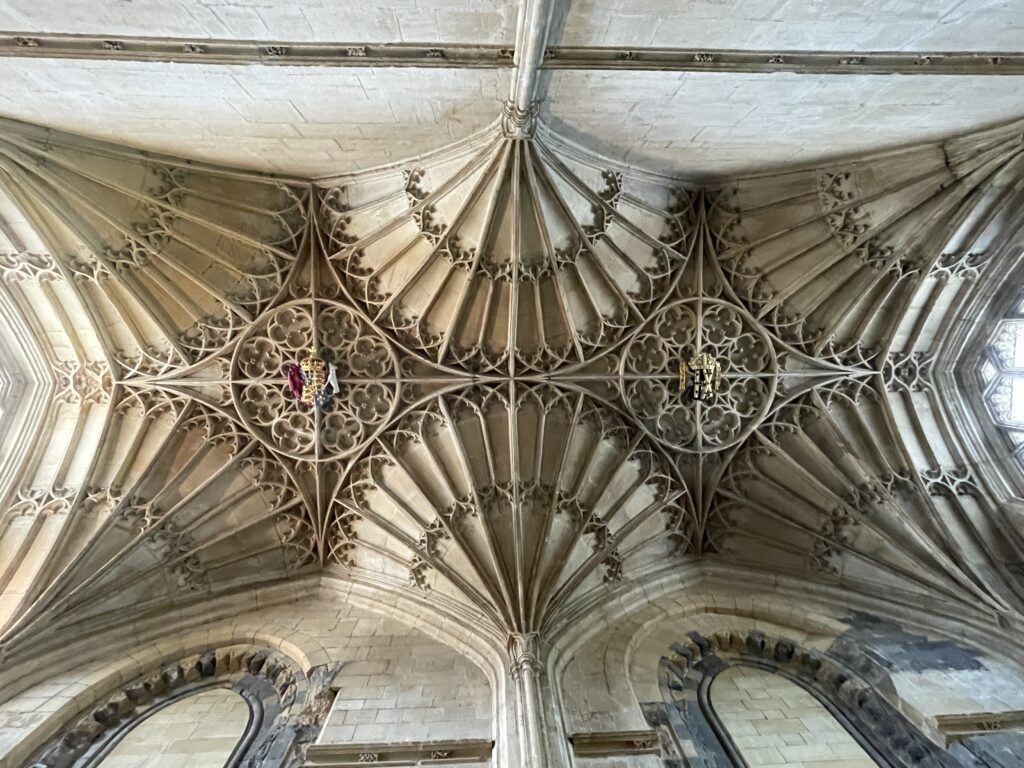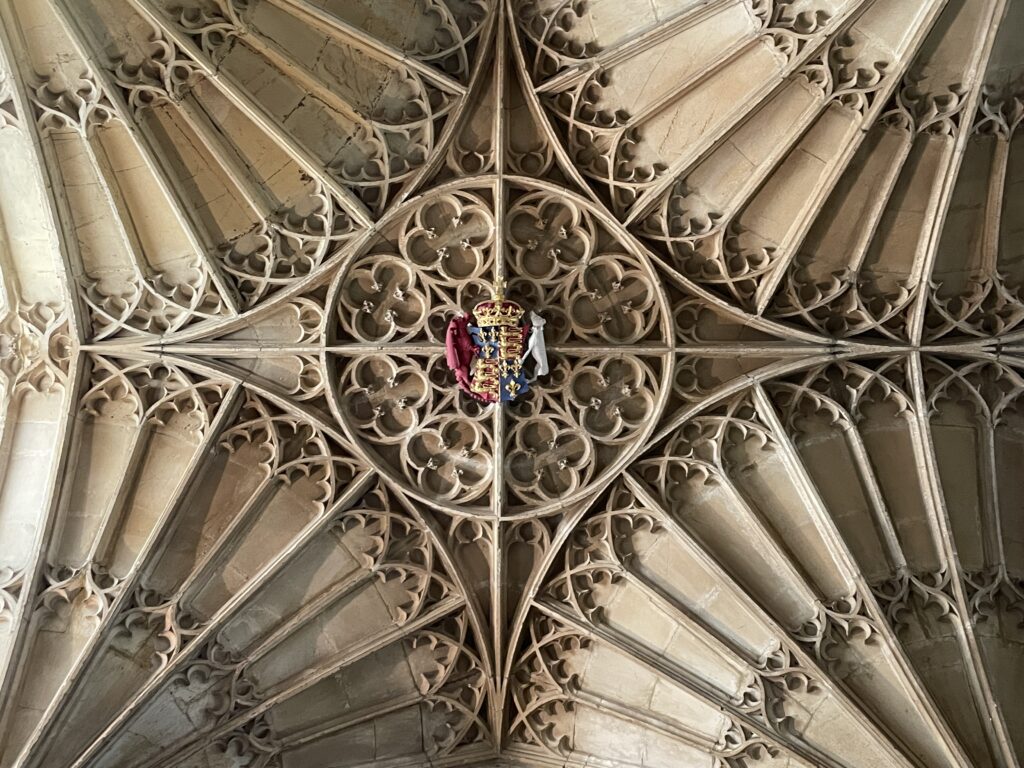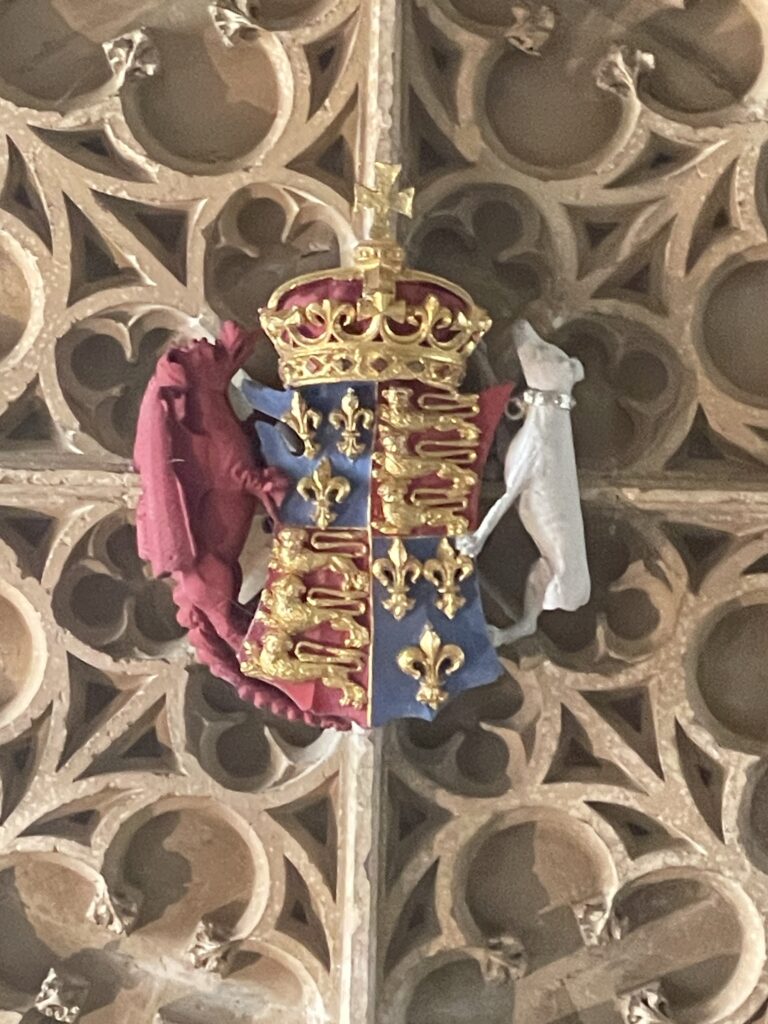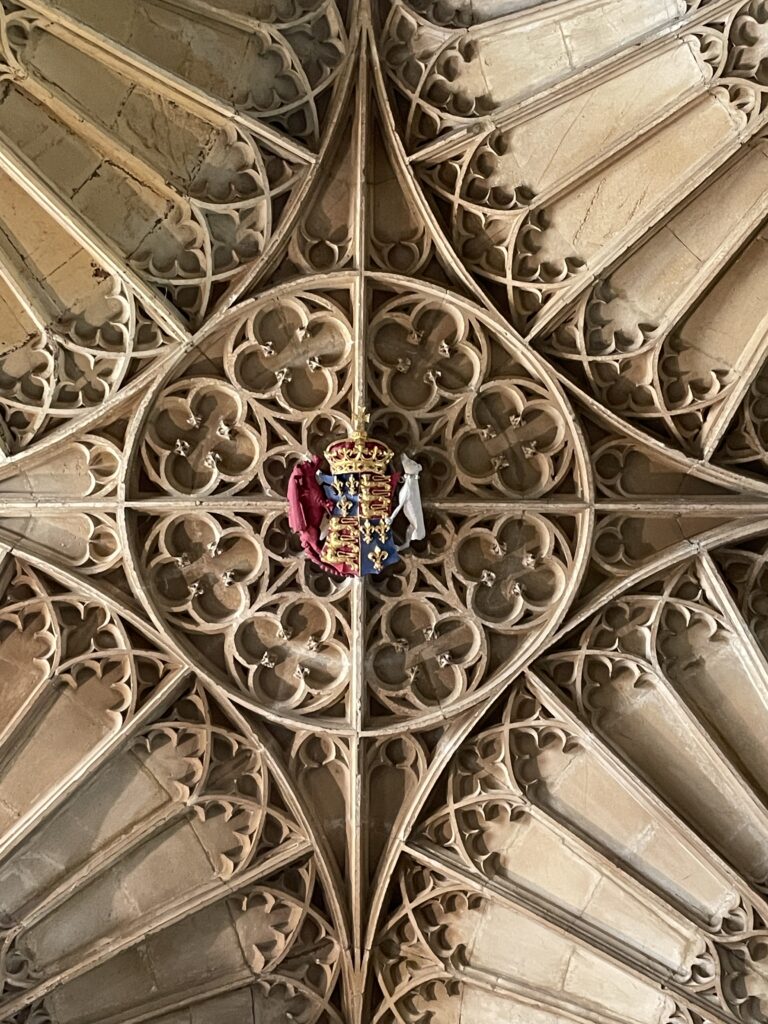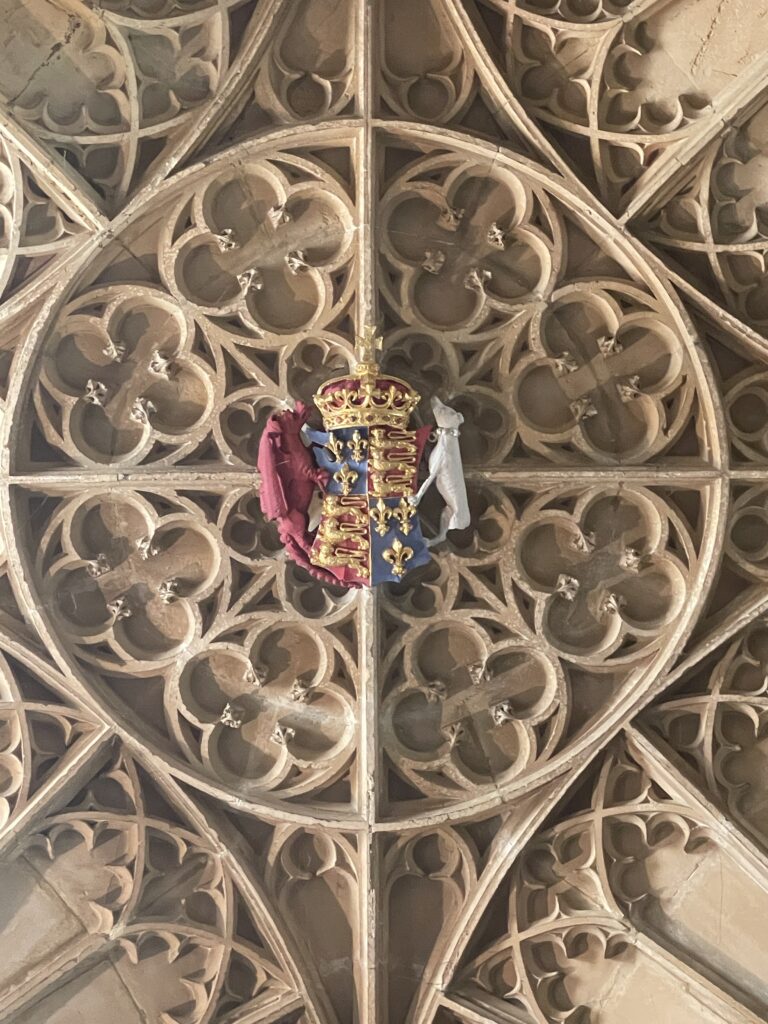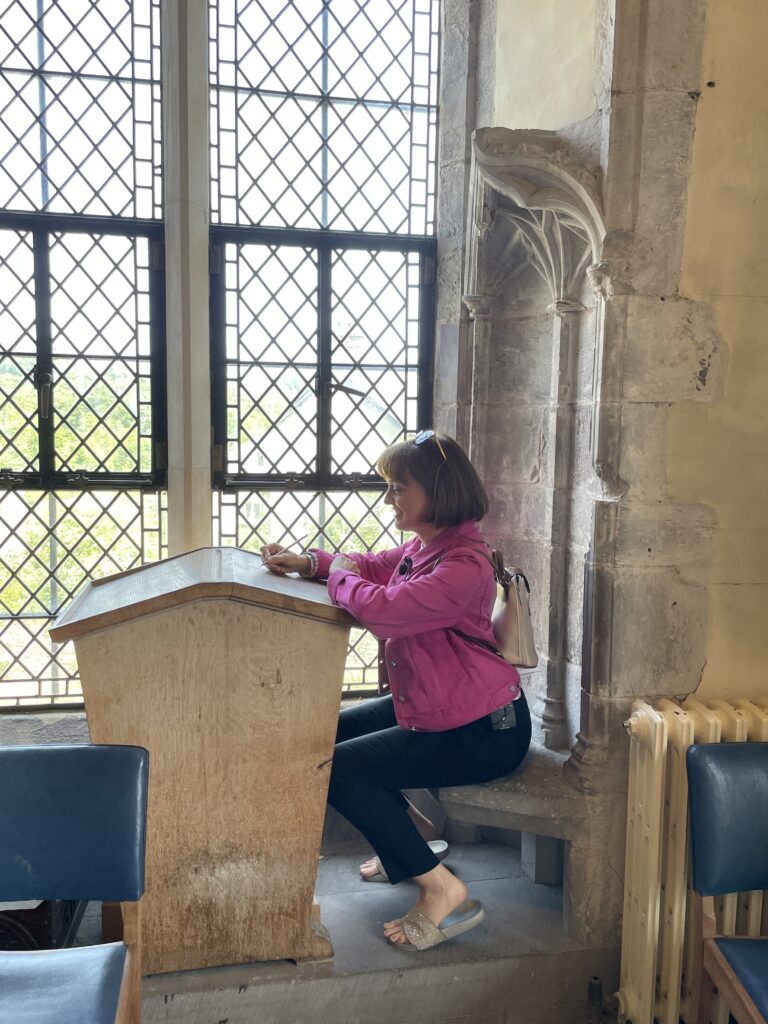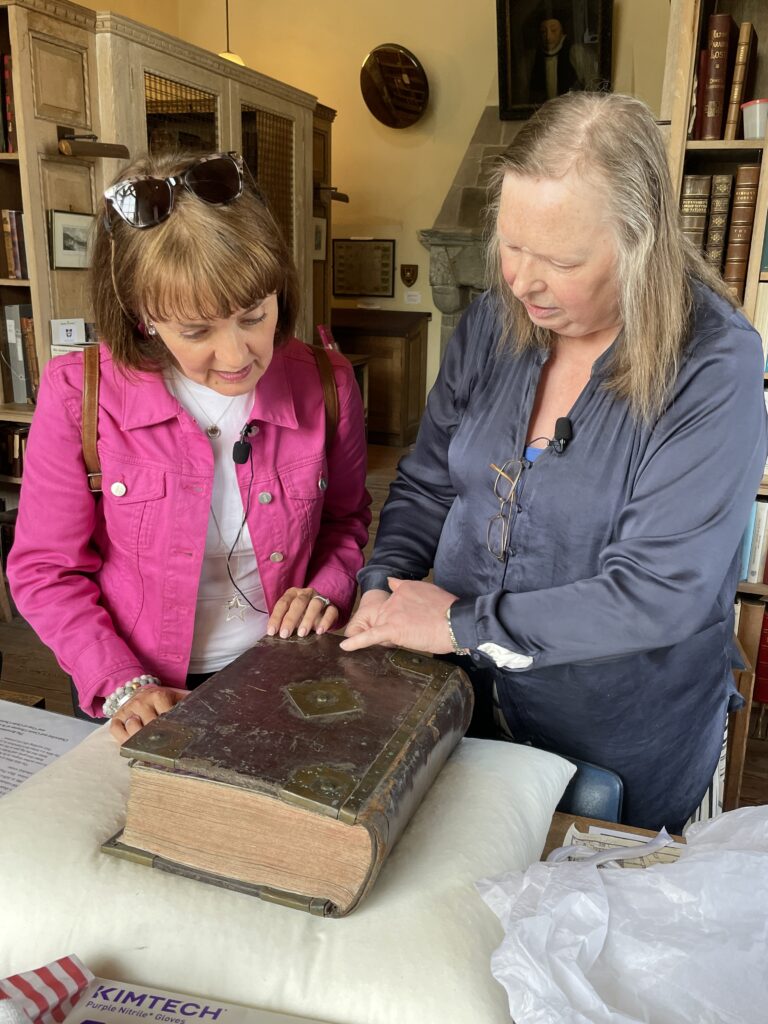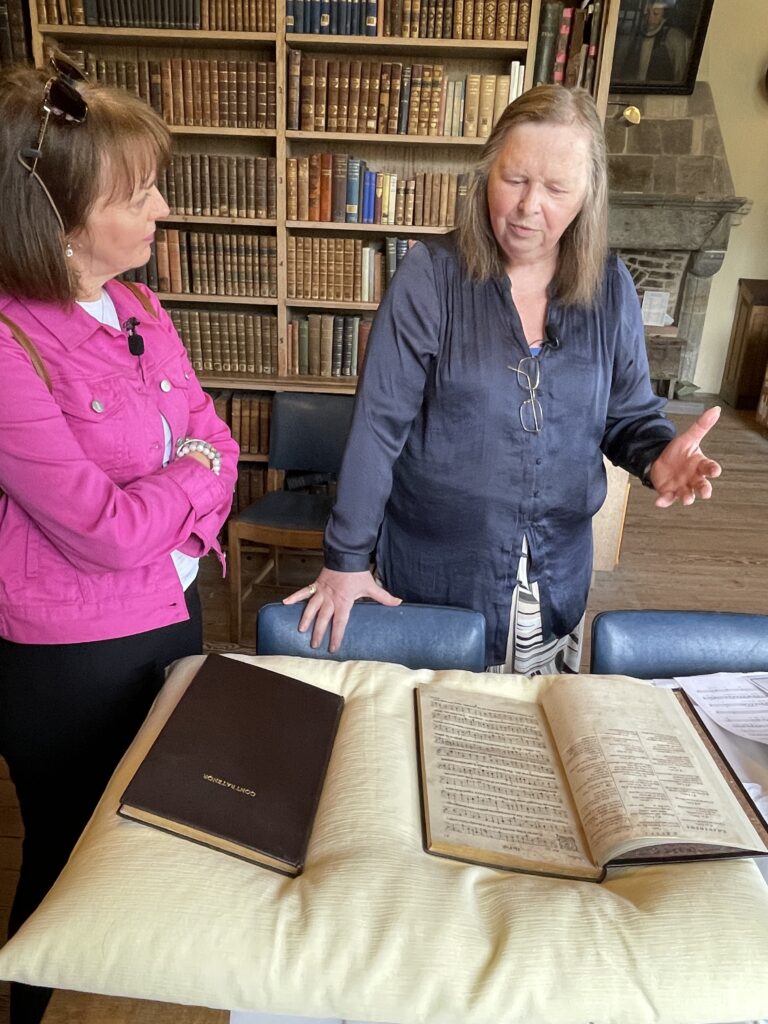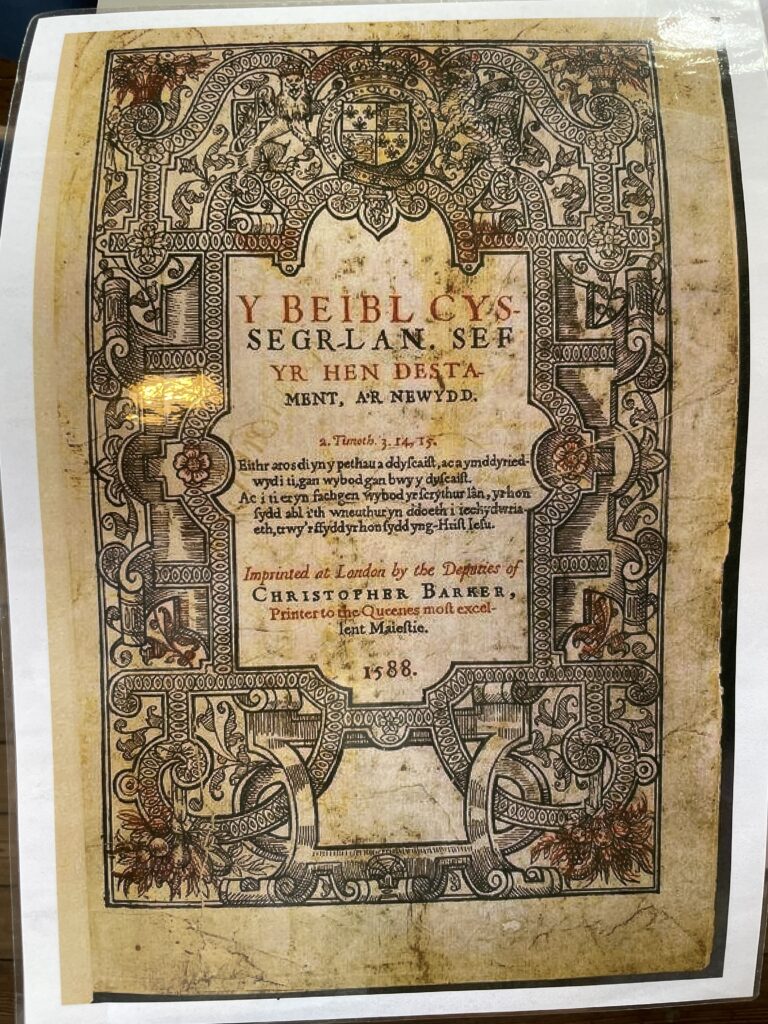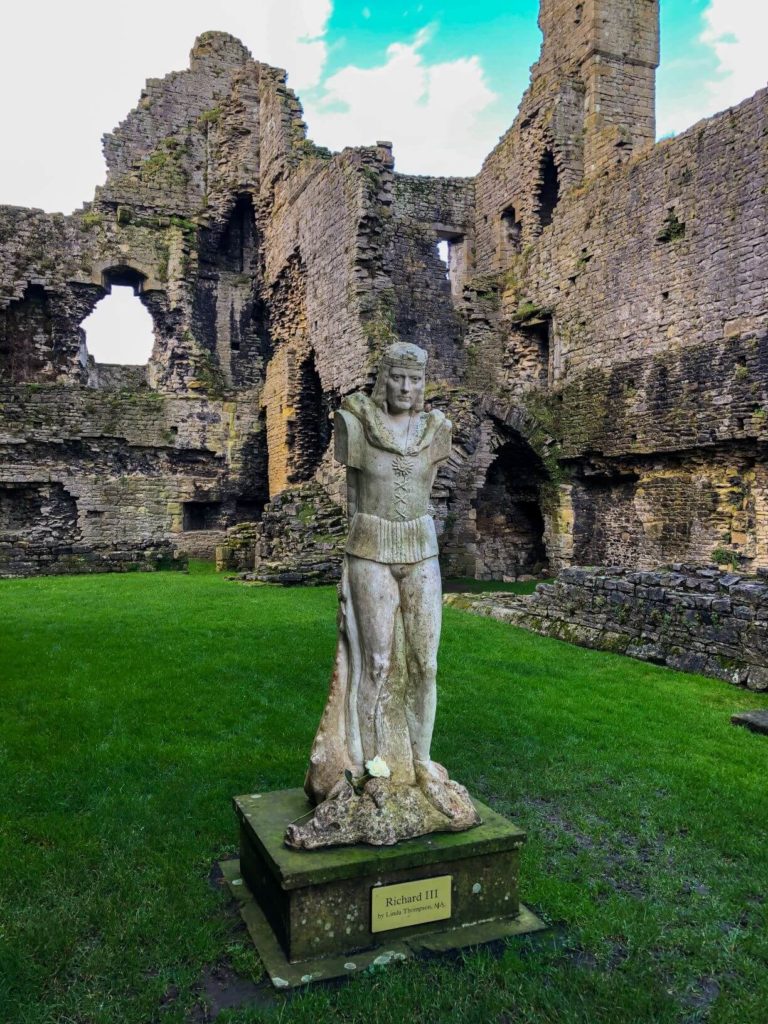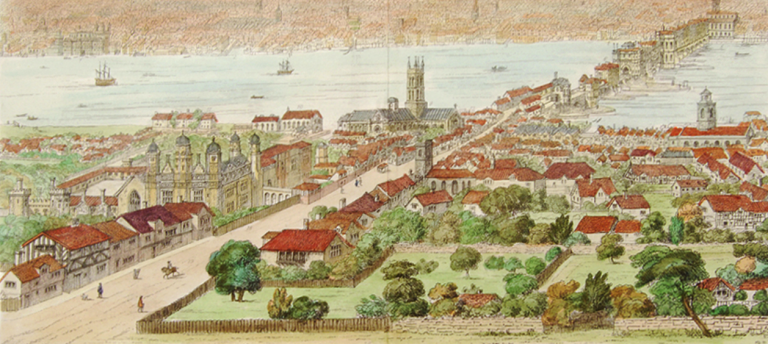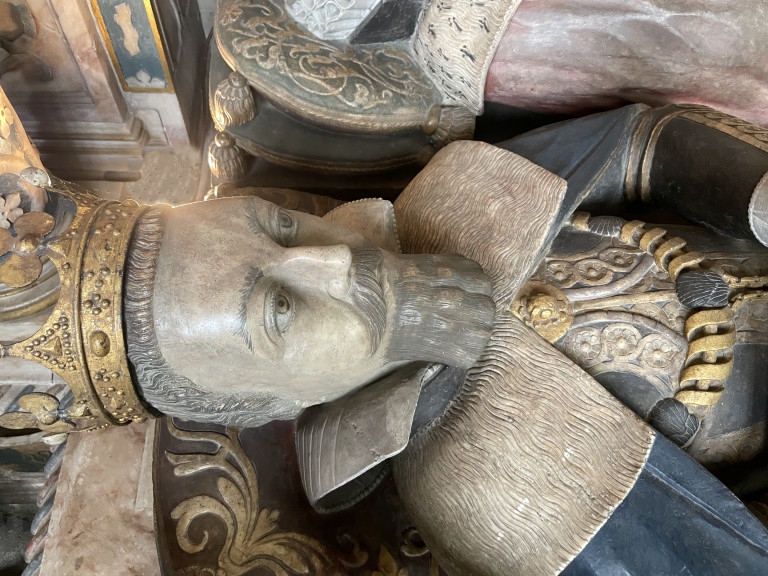St David’s Cathedral, St David’s Pembrokeshire.
Note: This is a show notes page accompanying my on-location podcast at Pembroke Castle, recorded in the summer of 2023.
An Introduction to St David’s Cathedral
In this month’s episode, The Tudor History & Travel Show heads to St David’s in Wales to commemorate St David’s Day on March 1. The smallest city by population in the UK, St David’s, feels more like a large village; it is utterly charming, with its four main streets converging on Cross Square, the ancient marketplace.
Down from the centre of the village is St David’s historic cathedral, the final resting place of its eponymous saint, the patron saint of Wales. The cathedral has been a place of pilgrimage and worship for over a millennium, and a more picturesque spot for such a venerable building is hard to imagine, nestled as it is in a verdant valley adjacent to the now-ruined Bishop’s Palace.

Sarah and Mari. Image © The Tudor Travel Guide
The cathedral dates back to the twelfth and thirteenth centuries and is the most important religious site in Wales. Pilgrims have visited the cathedral for centuries, and the building boasts impressive architectural features, including a stunning painted ceiling, examples of fan vaulting, the aforementioned Bishop’s Palace ruins, and the medieval cloister.
For any Tudor history lover, though, the main attraction is the chance to visit the tomb of Henry Tudor’s father, Edmund Tudor, buried in the very heart of the cathedral. Edmund was originally laid to rest in the priory of Greyfriars, Carmarthen. However, following the Dissolution of the Monasteries, Henry VIII had his grandfather’s corpse reburied in St David’s Cathedral. You will hear much more about the details of the tomb in this month’s episode.
Our guide today is Mari James, Library Development Officer at St David’s. Back in June 2023, Mari kindly showed us around the cathedral, and our conversation detailed its rich religious and historical heritage. Let’s go time-travelling!
Note: There is unrestricted access to the first half of this podcast here. However, to listen to the full episode, you must be a member of The Ultimate Guide to Exploring Tudor England, The Tudor Travel Guide’s membership site. For more information on the membership, click here.
If you are unfamiliar with St David’s, you might wish to listen to the podcast while viewing the gallery of images below, which were taken during our visit.
St David’s Cathedral Image Gallery
Exterior of St David’s Cathedral. Image © The Tudor Travel Guide.
The Shrine of St David. Images © The Tudor Travel Guide.
Images © The Tudor Travel Guide.
IMAGE GALLERY ABOVE:
Image One shows the nave looking toward the east end and high altar. Bishop Gower built the elaborate Gothic screen in the 1340s, which houses his tomb. On the screen stands the organ, rebuilt in 2000. On the north side is Thomas Tomkins’ memorial (born in St David’s, 1656), the great Tudor composer. Born in St David’s, Thomas was a chorister here, and his music is still used in the Cathedral.
Image Two shows the sixteenth-century wooden nave ceiling. This was made in the 1530s from Welsh oak, and with its rich decoration, it is the only cathedral ceiling of its kind in Britain. Below the oak panels hang twenty-two ornate carved pendants, each 1.5 metres high and just over 1 metre wide. The sides and corners of the nave roof are also adorned with half- and quarter-pendants.
The tombs of medieval bishops beneath the rood screen. Images © The Tudor Travel Guide.
The cathedral choir. By the altar are rare surviving medieval floor tiles. The hinged seats in the stalls have carved ledges to lean upon called misericords. These lively carvings include a dragon, an owl, and pilgrims being seasick over the side of a boat. Above the choir is the painted nineteenth-century tower ceiling. Images © The Tudor Travel Guide.
The Tomb of Edmund Tudor. Images © The Tudor Travel Guide.
Holy Trinity Chapel. Images © The Tudor Travel Guide.
In the cathedral archives…Images © The Tudor Travel Guide.
Useful Links
Visiting information for St David’s Cathedral is here.
If you’re interested in accessing an itinerary for Tudor Pembrokeshire, you can join my membership The Ultimate Guide to Exploring Tudor England, which brings together all my best, most comprehensive content in one place: blogs, videos, live chat, progresses, maps, itineraries, travel information and podcasts. For more information on the membership, click here.


